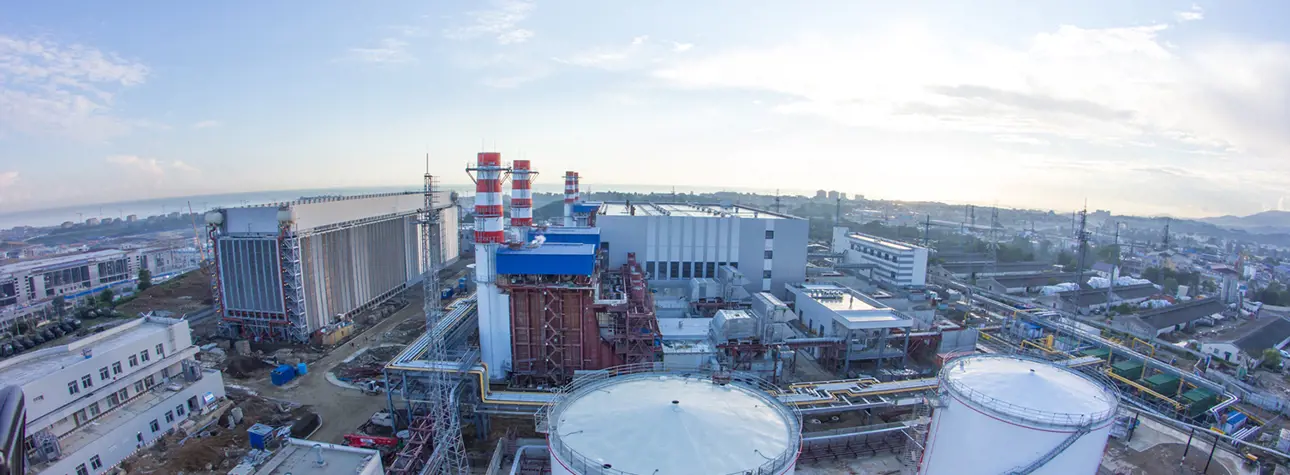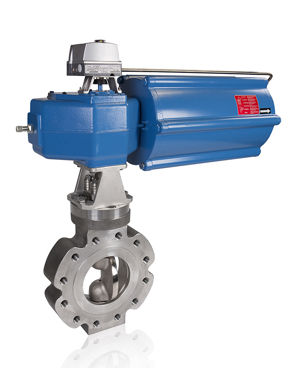On saving costs and improving turbine efficiency
Oct 1, 2017
In the power and gas turbine market, competition among turbine and compressor manufacturers has become more challenging. Decisions are driven mainly by price and efficiency. Saving costs by selecting the correct application-based control and safety valves has become more important.

New valve technologies and new valve designs help increase turbine efficiency and reduce costs while improving safety, for example, by installing a faster pressure relief in the case of a trip in a compressor or a gas turbine compressor.
New butterfly valve developments can provide a capacity increase of up to 75% compared to traditional designs. That means, for example, that gas turbine blow-off valve applications or compressor discharge and suction throttle valve applications can benefit from new designs, either with enhanced safety due to a faster discharge or by reducing valve size to save on cost. A 16" / CL150 blow-off valve can be replaced by a new-design 14" / CL150 valve with nearly the same capacity. In case of emergency, the state-of-the-art 14" butterfly valve will relieve the compressor or gas turbine compressor in the same amount of time as the 16" conventional valve. A smaller valve not only provides direct savings, it also allows a smaller diameter pipeline that saves costs.

The efficiency of steam turbines can be improved as well, if the new high-capacity butterfly valves are used for turbine inlet control and tripping. Due to increased valve capacity, pressure loss through the valve is decreased, and more steam energy becomes available for the turbine.
Improved valve performance is especially appealing for existing compressors or turbines that are to be refurbished, realizing both an increase of efficiency and safety.
The new butterfly valve designs have a high Cv rated disc, full-metal seat and stub shaft. The seat systems and shaftdisc connection do not need fasteners like bolts or pins. This specific design change provides additional safety since there are no elements to break loose within the pipeline that could damage blades or other internal parts of the compressor or turbine.
New packing and bearing materials provide further savings for turbine and compressor applications – 40% lower torque due to the full-metal sealing – which allows the valve and actuator package to weigh 20% less.
For applications where higher control accuracy and high-capacity, full-load operation is required, as in fuel gas control and also for compressor bypasses, the V-shaped ball-segment valve provides excellent controllability. Segment valves for fuel gas control have been used for decades on industrial gas turbines, but new design upgrades have increased their capacity range. Today, valve capacity starts with Cv=0.5 and goes up to Cv=23000 (1" – 32"). Due to a much higher capacity than with globe valves, segment valves save on cost by downsizing the pipeline.
Optionally, the valve can be equipped with special trims that provide noise attenuation and balance the flow for improved control accuracy.


For higher differential pressures, such as on anti-surge valves and bypass valves, full bore metal-seated ball valves with new noise-attenuating trims offer excellent control accuracy and controllability while reducing noise by up to 30 dBA. They yield a much higher Cv value than a comparable globe valve. Here also, downsizing both the valve and pipeline cuts costs.
Furthermore, noise-attenuating ball valve trims have the advantage of self-cleaning compared to globe valve labyrinth trims – especially in compressor applications where gases build hydrates that might lead to small orifice clogging. State-of-the-art, noise-attenuating ball valve trims are designed to flush themselves when the valve is in a fully open position. Therefore, complete plugging even under dirty gas conditions cannot occur.
Paying special attention to details count in the end, as they all add up to save costs and improve the efficiency of turbines and compressors.
TEXT: Andreas Pischke, Valmet
Published in Valve World magazine, Power generation section, October 2017.
This article has been up-dated in July 2020, due to company name change to Neles.

Andreas Pischke
Global Industry Manager
Valmet Flow Control business line

Subscribe to our newsletter
Subscribe now to flow control newsletter and receive the latest insights directly to your email.
SubscribeNeles™ butterfly valve, series BWX
Read more

